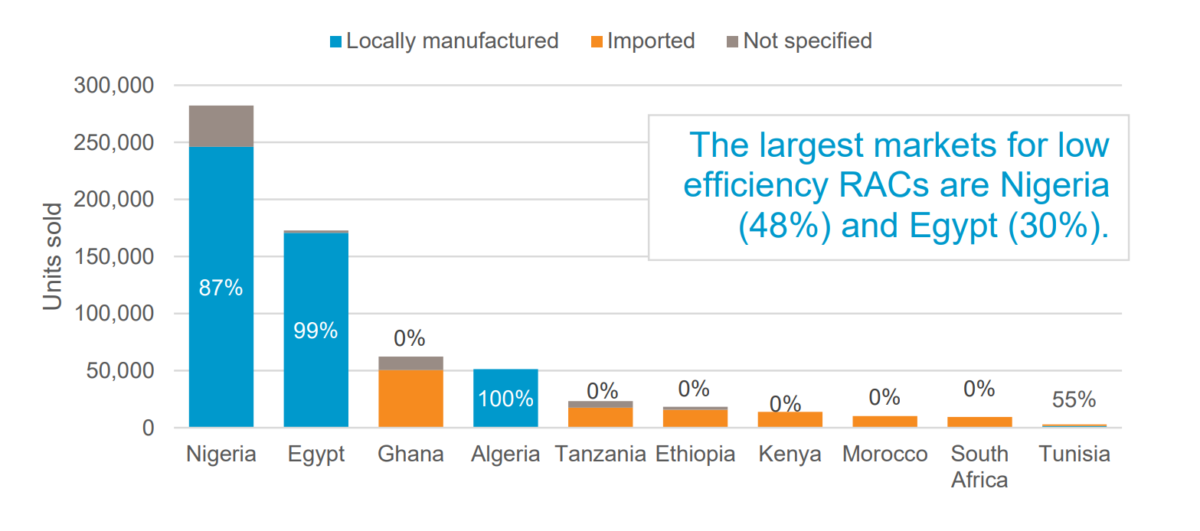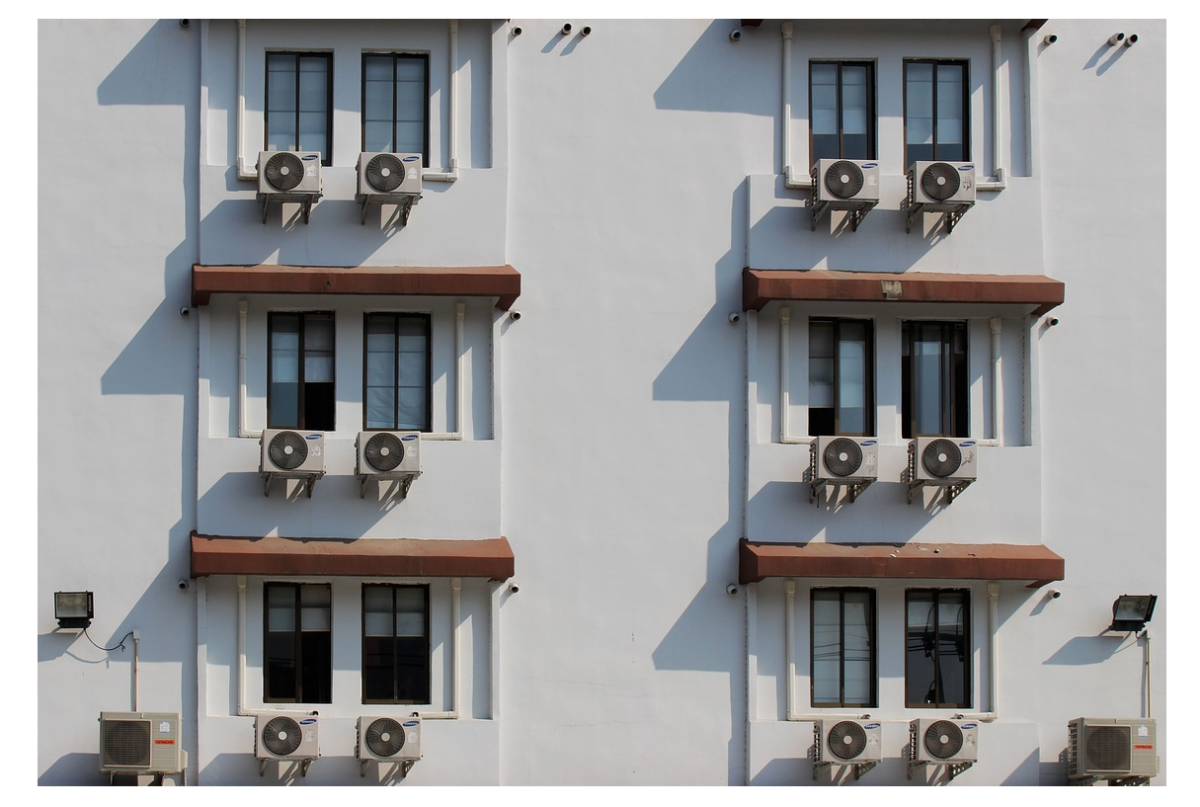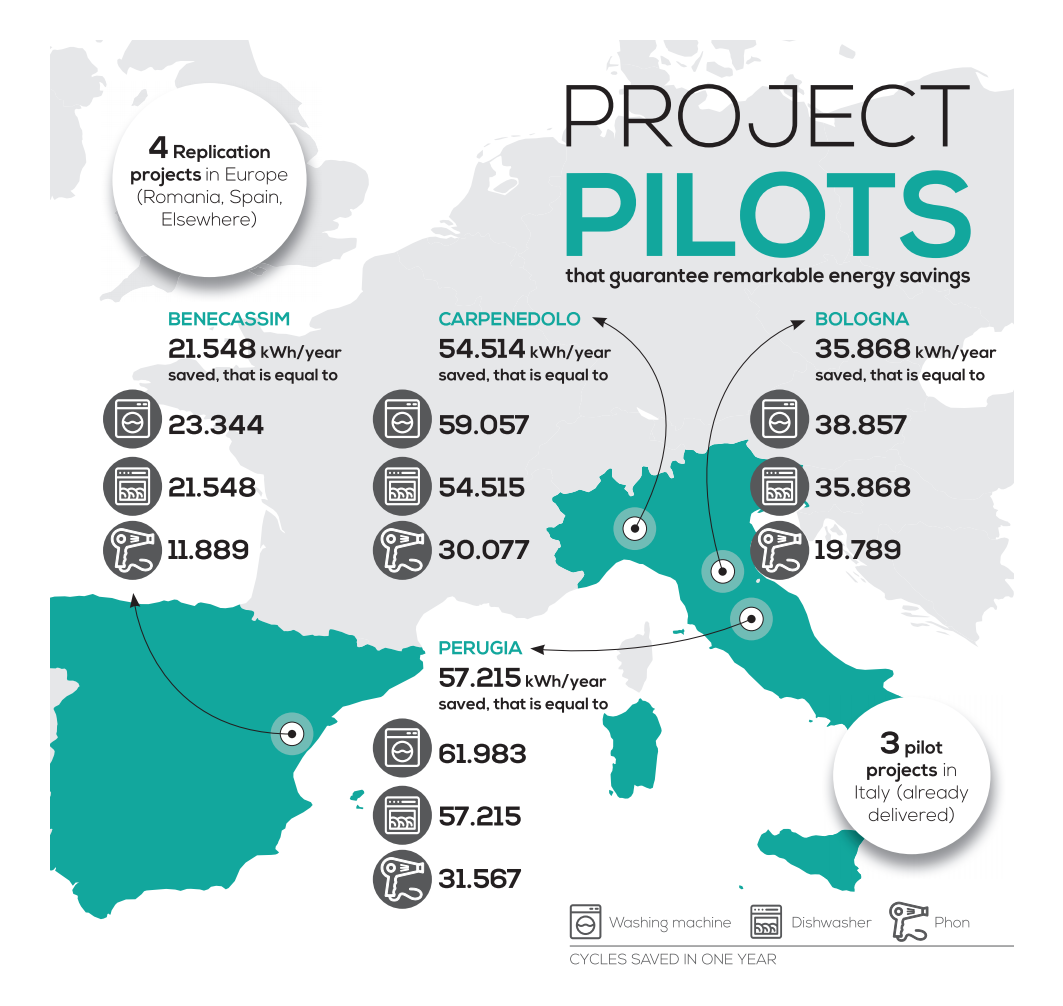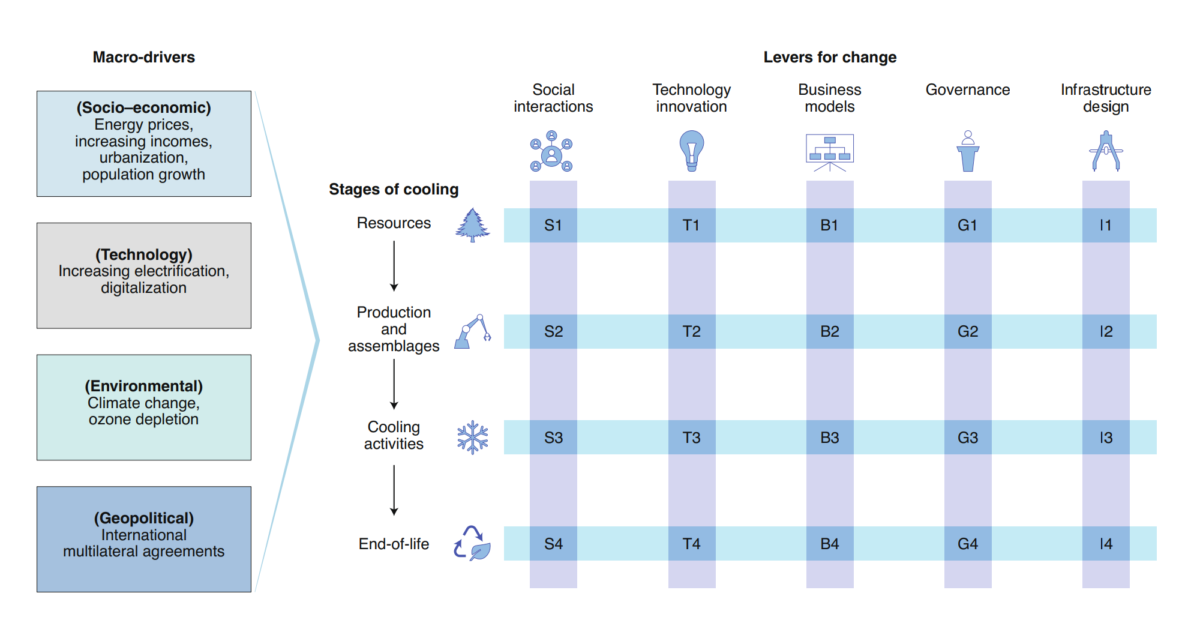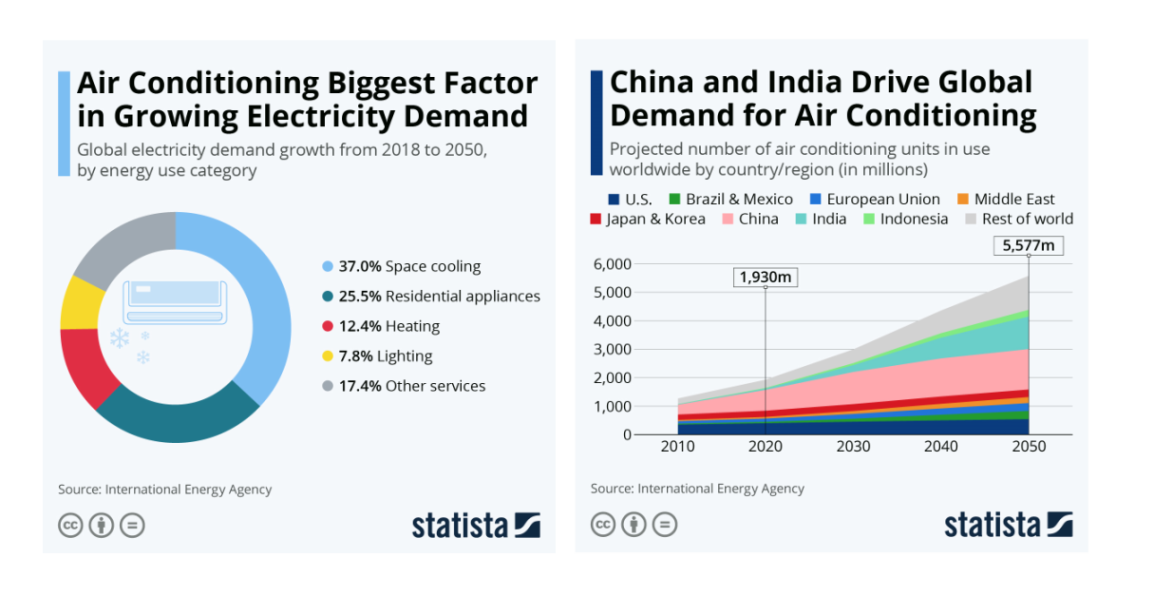Latest Cooling News: World Refrigeration Day; Ugandan insights; heat & babies; fridge loving aliens, AC dumping and more!
Hello and welcome to the monthly newsletter from the Oxford Martin School Programme on the Future of Cooling. The newsletter covers the latest cooling news and research updates; you can see previous editions here. Please let me know if there is something you’d like see featured, or if you have other comments or suggestions!
Helen Gavin
Happy World Refrigeration Day!
 Friday 26 June is World Refrigeration Day! Can you imagine your life without cooling?
Friday 26 June is World Refrigeration Day! Can you imagine your life without cooling?
How do we love thee? Let us count the ways. Take a moment to appreciate all the benefits that cooling brings us, how it is indispensable, and how fortunate are those who probably take it for granted.
Here are just three which help the world go round: proper storage of medicine, vaccines and blood supplies; supplying society with fresh foods; and essential cooling at data centres.
Cold chains can help mitigate the COVID-19 food crisis: key lessons from Uganda
The World Food Programme estimates that globally, the COVID-19 pandemic is estimated to double the number of people in acute food insecurity to 265 million unless rapid action is taken. In children, brief periods of malnutrition can lead to long-term negative effects on cognitive, physical and emotional development. Thus, ensuring the nutritional needs of children are met at all times is critical and a key source of essential nutrients is perishable food.
How can we make supply chains more resilient?
Researchers from the University of Oxford and Makerere University, Uganda have found key lessons for supply chain resilience worldwide, using the milk value chain in Uganda as an example: a country with a rural electrification rate below 20% and ranking low on the human development index.
Uganda’s milk value chain has been remarkably resilient during the COVID-19 outbreak without large fluctuations in sales or prices. This is in direct contrast to other food supply chains, fish and vegetables in particular, with small-scale farmers in rural areas suffering dramatic income reductions. The food shortage has severely affected urban households with no space to grow their own food, who are reliant on markets.
What’s behind the success of the milk value chain?
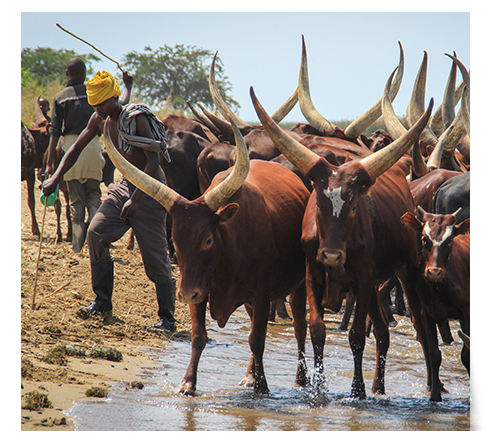 One reason is due to investment by the country’s dairy industry in well-functioning milk cold chains and storage facilities. Another is the presence of several large-scale milk processing plants that convert fresh milk into milk powder, greatly prolonging the shelf life. Milk powder is especially critical as vulnerable households in low-income countries often do not have access to electricity, let alone reliable domestic refrigeration.
One reason is due to investment by the country’s dairy industry in well-functioning milk cold chains and storage facilities. Another is the presence of several large-scale milk processing plants that convert fresh milk into milk powder, greatly prolonging the shelf life. Milk powder is especially critical as vulnerable households in low-income countries often do not have access to electricity, let alone reliable domestic refrigeration.
A key structural reason underpinning Uganda’s dairy industry ability to build effective cold chains is the high level of bottom-up aggregation through cooperatives. Several hundred formalised and hierarchically organised dairy farmer cooperatives exist throughout the country: roughly 70% of South Western Ugandan dairy farmers are organised within local-level cooperatives. The cooperatives collect milk from small-scale dairy farmers, manage its distribution, and counteract price and supply shocks for farmers.
By way of contrast, Uganda’s fish supply and value chain largely collapsed following the COVID-19 lockdown. With very little cold chain, fish from the large fishing grounds of Lake Victoria are either not cooled or limited to small-scale ice sellers. There are no large-scale fish storage or freezing facilities, transport is mostly organised in small vehicles, no large-scale processing plants exist and there are no strong fishing cooperatives.
Learnings
In the short term, it is critical to maximise the nutritional value of food required to combat the COVID-19-induced food security crisis. This can be done by converting perishable foods so they have a longer shelf life such as cold storage, powder production, canning, smoking, drying or pickling. Longer term, the high upfront investment of infrastructure to support shock-resilient food value chains must be overcome.
The dairy case in Uganda suggest that aggregation is a key lever, others could entail large-scale appliance finance and servitisation schemes.
You can read the full article here.
Heat and health
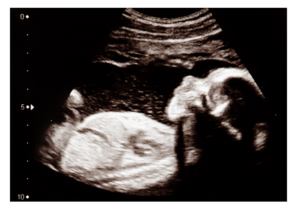 A study that examined data from over 32 million US births has found significant association between increases in fine particulate matter (PM2.5), ozone, and heat exposure due to climate change, with adverse pregnancy outcomes, such as preterm birth, low birth weight, and stillbirth. The research presents some of the most sweeping evidence so far linking aspects of climate change with harm to new-borns.
A study that examined data from over 32 million US births has found significant association between increases in fine particulate matter (PM2.5), ozone, and heat exposure due to climate change, with adverse pregnancy outcomes, such as preterm birth, low birth weight, and stillbirth. The research presents some of the most sweeping evidence so far linking aspects of climate change with harm to new-borns.
The study found positive associations across all US geographic regions concluding that increasingly common environmental exposures exacerbated by climate change are significantly associated with serious adverse pregnancy outcomes. The findings are consistent with other review articles that included non-US participants.
The work revealed a disproportionate effect on pregnant women with certain medical conditions or specific race/ethnicities. Women with asthma may be particularly susceptible to adverse outcomes, as well as black mothers. The research adds to a growing body of evidence that minorities bear a disproportionate share of the danger from pollution and global warming.
Social determinants of health, including residence in urban areas with higher exposure to air pollutants and long-term high levels of stress, are known to contribute to adverse obstetrical outcomes.
The authors call for the medical community to take note of the emerging data, communicate the risks with patients and integrate them into care plans. Moreover, physicians could actively advocate for effective action to stop the climate crisis.
News Bites
Do aliens use fridges?
 Scientists scanning the universe for signs of intelligent life have so far focused on radio waves as a ‘techno-signature’. Techno-signatures relate to signatures of advanced alien technologies similar to, or perhaps more sophisticated than, what we possess.
Scientists scanning the universe for signs of intelligent life have so far focused on radio waves as a ‘techno-signature’. Techno-signatures relate to signatures of advanced alien technologies similar to, or perhaps more sophisticated than, what we possess.
In a new collaboration, scientists at Harvard and the University of Rochester will also look for two new signatures: solar panels and refrigerants.
The idea is that other civilisations will also harness the power of their suns with solar panels, and the scientist will scan space for a specific wavelength band where sunlight may be reflected off solar in a distant exoplanet. In addition, further to looking for natural chemicals, the scientists will look for signs of industrial activity marked by the presence of synthetic molecules such as chlorofluorocarbons.
Move over Extreme Ironing!
 Move over extreme ironing! Hello extreme air conditioner disassembly???
Move over extreme ironing! Hello extreme air conditioner disassembly???
This is a novel way to test manufacturer claims. On 18 June 2020, a team of skydivers tested the claim that the Midea All Easy Pro split air conditioner can be disassembled in less than one minute by removing just one screw.
They did it! Within 40 seconds after jumping off the plane, while free falling at 200km/h at an altitude of 4,500m.
Pay As You Cool
In 2021, Daikin Industries plan to introduce a servitisation scheme for air conditions, rolling out a pay-as-you-go cooling service in Tanzania to try and get a share of the market. It will target businesses such as shops, hairdressers and restaurants charge $1.20 to $1.60 a day to use its cooling appliances. Payment will be made via a mobile phone payment system to unlock the device for a day. Daikin will provide the air conditioner but the installation and electricity costs will be covered by the customers. Daiken hope that this will persuade business owners to eventually buy their more efficient (but more expensive) products.
The dumping of air conditioners in Africa
CLASP and the Institute for Governance & Sustainable Development (IGSD) have released a report on the “Environmentally Harmful Dumping of Inefficient and Obsolete Air Conditioners in Africa” and will be running a webinar on the topic on 1 July 2020 3pm UTC+1.
The demand for air conditioners is steadily growing across the African continent as consumers seek to improve their quality of life in the face of urbanization and rising global temperatures. The market for split room air conditioners (RACs) grew by 14% from 2005 to 2019.
As industrialised economies place increasingly stringent energy performance standards on RACs sold domestically, in keeping with the Montreal Protocol, importing countries risk becoming dumping grounds for inefficient, environmentally harmful products.
The study examined ten countries across Africa that account for 96% of the continent’s RAC market: Algeria, Egypt, Morocco, Tunisia, Ghana, Nigeria, Ethiopia, Kenya, Tanzania, and South Africa. The findings shows that:
- 35% of the RACs sold do not meet minimum energy efficiency standards in their countries of origin and contain refrigerant fluids that are powerful greenhouse gases
- 650,000 units are being imported annually to African countries that do not meet an energy efficiency coefficient of 3.0 W/W (i.e. the unit consumes 1 Watt for energy 3 Watts of removed heat). This is despite the manufacturing countries maintaining standards well above this level
- One-quarter of the low-efficiency RACs containing obsolete refrigerants were imported from non-African companies; others were assembled in Africa by either local subsidiaries of non-African companies.
This dumping of environmentally harmful inefficient, high GWP products occurs due to weak or non-existent energy performance standards and the lack of proactive anti-environmental dumping policies in many African countries. Low-efficiency RACs means that customers pay higher electricity bills and countries pay more for electricity infrastructure and imported fuel.
The report has many recommendations including:
- Ratify and implement the Kigali Amendment to the Montreal Protocol
- Revise tariffs to promote energy efficiency goals
- Implement and enforce a ban on the import of inefficient second-hand / refurbished RACs
- Implement government bulk purchasing and support for buyers’ clubs
- Engage local groups profiting under current system to trade in obsolete equipment as part of the solution.
Check out the report to be fully informed of the obstacles and paths to environmentally sustainable cooling technologies, and the recommendations.
Adoption of AC in temperate countries and impact on energy poverty
New research using OECD data has shown that climate change is making more and more households install and use air conditioning (AC), causing electricity bills to increase by 35% to 42%.
The study looked at eight temperate, industrialised countries: Australia, Canada, France, Japan, the Netherlands, Spain, Sweden, and Switzerland. The adoption of AC in those countries ranges widely, from almost 91% in Japan to only 5% in Switzerland.
A key finding was that the emerging role of cooling as a basic or health need, in countries that traditionally have not “needed” such appliances, could exacerbate energy poverty, due to these bill increases. Families might not be able to afford the most efficient appliances, and paying for cooling may divert expenditure away from food and education.
Other insights from the study were that both household and home size are positively associated with energy expenditures, but those variables do not affect the adoption of AC. Households with members below the age of 18 are more likely to adopt AC, yet households with a larger share of young members but above the age of 18 consume less electricity, potentially reflecting the different habits at different ages, as well as credit constraints.
Gender and education also affect AC adoption: households with a male head are more likely to have AC; the more educated the household, the less likely it will invest in AC, suggesting perhaps greater awareness of the impact on the environment. Similarly households that are more accustomed to adopting energy-saving behaviours are less likely to adopt AC. Urban dwellers are more likely to have AC due to the higher number of cooling degree days caused by the urban heat island effects.
Spotlight on the “Carbon 4 Retail” C4R refrigeration project
Unlike industrial and domestic refrigerators, commercial refrigerators are still largely based on synthetic fluorinated refrigerants, such as HCFCs and HFCs. These refrigerants have a damaging impact on the ozone layer and their global warming potential (GWP) is extremely high.
For this reason, the EU banned the use of HCFCs in 2009,and the use of HFC in 2014. The latter involves a phased approach, with a total ban by 2022 on all synthetic fluorinated refrigerants in new supermarket refrigeration systems.
Step forward the LIFE C4R project! Funded by the EU over 2018-2021, the project objectives are to:
- develop a technology that allows a minimum of 10% energy savings in commercial refrigerating plant in any country, with any external temperature; and
- To prove that HCFCs and HFCs can be completely substituted with CO2 in any climate or market condition.
Carbon dioxide,CO2, is a natural, non-toxic and non-flammable fluid. Another objective of the project is to raise awareness of how CO2 can be used for refrigeration, thereby helping to define new standards and technologies.
The project has paired up with Epta, a multinational Group specialising in commercial refrigeration for retailers. Together they have developed an award winning “Full Transcritical Efficiency” technology, which apparently merges simplicity, reliability, functionality, energy saving and better performance, in any climate condition. It is testing two different prototypes in Italy and is also running replicate pilots in other countries in Europe to demonstrate the validity of the technology under different climate conditions.
Update from the Chill Challenge!
 Engineers Without Borders – USA launched its Chill Challenge Call in 2019. The Challenge is to develop refrigerators and icemakers that are significantly more affordable for off-grid communities than currently available units.
Engineers Without Borders – USA launched its Chill Challenge Call in 2019. The Challenge is to develop refrigerators and icemakers that are significantly more affordable for off-grid communities than currently available units.
The reason for the Challenge is the recognition that there may be as many as 2 billion people worldwide without access to reliable refrigeration, which can unlock economic and social development. It is also critical for health and nutrition, reduction of food waste, and to reduce the burden on women. While some communities have access to electric mini-grids the power these generate my not be sufficient for a fridge.
So the gauntlet laid down in the Challenge is to either:
- Develop a 150-250 litre refrigerator that can chill 20 litres of water/day from 35ºC to 3ºC, and cost less than $12/month to own and operate, or
- Develop an icemaker that can produce 100-1000 kg of ice/day at a cost of $0.03/kg or less.
The awardees have been announced and multiple technologies are proposed to meet this low-cost, off-grid cooling challenge. The teams awarded funds to develop their ideas are:
- Solar Cooling Engineering: Solar Ice Machine using Key Components and Engineering for a better Access to Refrigeration
- New Leaf Dynamic Technologies, India: Ice Maker Powered by Farm Waste
- Ove Arup: Passive Cooling Box
- Xergy Fridge-X: Off-the-Grid Refrigerator Utilizing Solid-State Refrigerants
- Purdue University, USA: Cold Storage Battery for Domestic Refrigeration and Combined Heating and Cooling for Agricultural Applications
- Imperial College London: Affordable Decentralized Off-grid Icemaking


